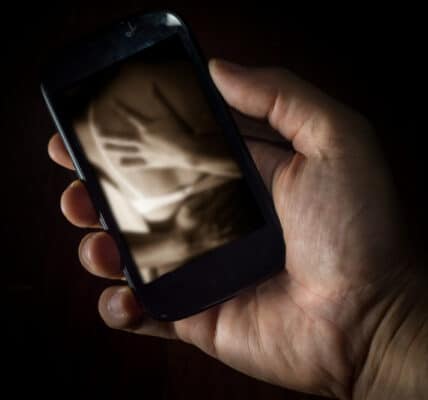Has the Case for Pornography Addiction Been Blown Out of Proportion?

The addictive properties of pornography have been known for a long time. Even before the internet, humans and animals showed keen interest in observing the mating rituals of their species. Male chimps trade food for images of female chimp genitalia, and human pornography goes back at least 2,000 years, according to a recent discovery of pornographic cave graffiti in Cumbria, England.
With the advent of the web browser in 1994, the distribution of pornography went on steroids. First came the proliferation of pornographic images, then an abundance of adult video, then the streams of live performances. The porn industry, in fact, was behind many of the technological innovations that turned the internet from a dull, all-text hobby for nerds into a firehose of on-demand and live video entertainment.
The ready availability of a seemingly limitless supply of pornographic images, videos and streams has resulted in many people self-reporting being addicted to porn. But how addicted are people really and when is it a problem?
A recent National Public Radio (NPR) podcast on the “nofap” pornography abstinence movement cited some surprising statistics. Research by Joshua Grubbs at the University of Mexico found that, among people who self-identify as porn addicts, the average frequency of porn use was less than once a month. Grubbs went on to say that one in 10 American men say they are concerned they’re addicted to porn.
A systematic review of the scientific literature regarding pornography addiction pegged the number at between 3% and 6% of adults suffering from the syndrome. While there is no accepted definition of pornography addiction — and thus the wild swings in estimates of how many people suffer — the authors of the review offer a definition:
Continued use [of pornography that] sometimes derives in financial, legal, occupational, and relationship trouble or personal problems, with diverse negative consequences. Feelings of loss of control and persistent use despite these adverse results constitute “online sexual compulsivity” or Problematic Online Pornography Use (POPU).
The largest study cited by the authors was an Australian survey with over 20,000 participants. They found that 4.4% of men considered themselves addicted to porn and 1.2% of the women. Interestingly, a Spanish survey of over 1,500 college students found that only 0.7% were “pathologically addicted” to pornography while 8.6% believed they were at risk of becoming porn addicts. Half of U.S. teens say they are “addicted” to their phones but less than 10% meet the criteria for addiction.
In the previously-cited NPR podcast, sex and relationship therapist Silva Neves, says, “In all of the years I’ve been seeing people who complain [of] compulsive sexual behavior, there’s been so very few that actually met all the criteria of the disorder.” The numbers indicate that many people feel bad about their use of pornography but fall short of truly being addicts.
Abstinence is one way to break the hold of pornography addiction, and that’s driving the “nofab” movement of mostly men who attempt to abstain from masturbation. Brain scans do show some restoration of function after a period of abstinence:
Psychiatry professor Norman Doidge reported in his book The Brain That Changes Itself that removal of Internet pornography use reversed impotence and sexual arousal problems in his patients.
The systematic review of pornography addiction literature found that “brain changes observed in addicts have been linked with patients with hypersexual behavior or pornography users through approximately 40 studies of different types: magnetic resonance imaging, electroencephalography (EEG), neuroendocrine, and neuropsychological.” The fact that brain scans show improvement after abstinence “would imply that the previously mentioned brain alterations are somewhat reversible.”
So, that’s some good news! Complete abstinence from masturbation may be unhealthy, although many people have found a temporary period of abstinence helpful in moderating their use of online porn. Attempting complete abstinence can lead to dwelling on failure to the point of causing anxiety and sleep disorders.
Our advice to our porn-addicted readers is to relax; most likely nine out of 10 of you are not addicts, though you might wish you used online porn less often. For those one out of 10 who are pathologically addicted, complete withdrawal for a period of up to 90 days may prove beneficial and restore to some degree your fatigued reward system.
Written by Steve O’Keefe. First published February 12, 2024.
Sources:
“Masturbation abstinence is popular online. Doctors and therapists are worried,” Consider This From NPR, February 3, 2024.
“Online Porn Addiction: What We Know and What We Don’t — A Systematic Review,” Journal of Clinical Medicine, January 2019.
“Is Internet Pornography Causing Sexual Dysfunctions? A Review with Clinical Reports,” Behavioral Sciences, August 2016.
“Porn pioneers: How adult entertainment boosts technology,” TheNextWeb, August 30, 2016.
Image Copyright: kkolosov.




